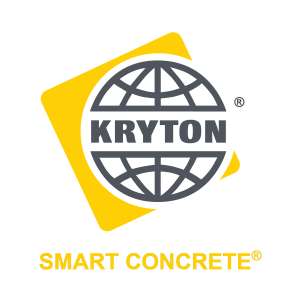Marine Infrastructure Turns to Durable Concrete as Storm Surges and Rising Sea Levels Impact Waterfront Development
Waterproofing and self-healing admixtures can provide 100-year durability, protect against concrete failure, and reduce maintenance costs
This issue is becoming imminent as marine infrastructure ages and weather intensifies”
VANCOUVER, BRITISH COLUMBIA, CANADA, October 7, 2025 /EINPresswire.com/ -- With global sea levels rising and storm surges increasing in intensity, marine environments are taking their toll on sea walls, piers, bulkheads and drydocks from New York City to Hawaii and all along the North American coastline.— Kari Yuers, President & CEO of Kryton International
A global leader in concrete waterproofing and durability solutions, Kryton International is sounding the alarm for more durable, longer-lasting concrete that can self-heal and endure the sustained impact of increasingly harsh marine environments.
“Without materials engineered to resist corrosion, cracking, chloride ingress, and cyclic loading, vital coastal infrastructure is at risk of premature failure, escalating maintenance costs, and loss of mission readiness,” said Kari Yuers, President & CEO of Kryton International. “This issue is becoming imminent as marine infrastructure ages and weather intensifies.”
Kryton’s Krystol technology reacts with moisture to form insoluble needle-shaped crystals that fill capillary pores and micro-cracks in the concrete and block the pathways for water and waterborne contaminants. Unlike other solutions whose effectiveness may deplete over time, Krystol technology cannot be used up and will continue to provide self-sealing performance for the life of the concrete. Any moisture introduced over the lifespan of the concrete will initiate crystallization, ensuring permanent waterproofing and watertightness protection.
An example of this solution is taking place in Hawaii, where the U.S. Navy’s $3.4 billion Dry Dock 5 project is using Kryton’s Krystol Internal Membrane (KIM) to fortify its largest construction project in Navy history. Dock 5 will service the next generation of nuclear submarines. Protection and longevity of this valuable infrastructure is vital to the Navy’s operational goals in the Pacific region.
“Such critical marine infrastructure needs to be built to last – not just for strategic and safety reasons, but from an ROI perspective as well.” Yuers said. “The cost of repairs are extraordinary when you consider how much additional concrete would need to be applied for maintenance over the lifespan of a marine infrastructure project.”
According to an extensive 10-year study funded by the U.S. Department of Transportation and conducted in Pearl Harbor by the University of Hawaii, Kryton’s KIM has stood out as the only concrete waterproofing product to withstand the harsh and corrosive Hawaiian marine environment. Additionally, the U.S. Army Corps of Engineers and Navy have recently adopted guidelines for concrete specification recommending crystalline admixtures as “supplemental corrosion protection” for such applications.
Lessons from Real-World Projects
Multiple marine infrastructure projects have already demonstrated how enhanced concrete and waterproofing strategies can mitigate deterioration, prolong service life, and lower life-cycle costs. Some case studies include:
• Naval Fleet Maintenance Facility (Victoria, Canada)
At a naval facility overhaul, Kryton’s Hard-cem was used in concrete to block leakage, mitigate corrosion, and extend structural life under marine conditions.
• Governors Island Seawall Rehabilitation (New York City)
On Governors Island, N.Y., the seawall project integrated crystalline waterproofing solutions to reduce water ingress and chloride penetration, enhancing durability of the wall facing tidal forces.
• Pier 57 / “SuperPier” Redevelopment (New York City)
During redevelopment of Pier 57 in New York, advanced concrete waterproofing was employed to protect substructures from saltwater exposure and reduce long-term maintenance demands.
• Santa Lucia Riverwalk (Monterrey, Mexico)
As part of the city’s construction of the 1.5-mile Canal Santa Lucia, 27 tons of KIM was used to seal the canal and prevent intermixing with contaminated groundwater beneath.
“These examples affirm that, with proper design and planning, modern marine infrastructure can be built to withstand the harsh environments of the future,” Yuers said. “To safeguard coastal assets and Naval readiness, stakeholders across the marine infrastructure ecosystem should specify durability as a primary design objective, not an afterthought.”
For more information, visit www.kryton.com or join its upcoming webinar, Water, Wear & Shutdowns: The Triple Threat to Your Concrete, to learn about avoiding a costly shutdown.
ABOUT KRYTON
Kryton International Inc. is the inventor of the crystalline waterproofing admixture and has been waterproofing concrete structures with its proprietary Krystol® technology since 1973. Kryton has won awards for innovation, manufacturing, best place to work, and entrepreneurship. Kryton is an active member of the American Concrete Institute, International Concrete Repair Institute, American Shotcrete Association, and many other thought-leading organizations. Kryton exports its Smart Concrete products to more than 50 countries globally. www.kryton.com
Andrew King
The Hoyt Organization
aking@hoytorg.com
Legal Disclaimer:
EIN Presswire provides this news content "as is" without warranty of any kind. We do not accept any responsibility or liability for the accuracy, content, images, videos, licenses, completeness, legality, or reliability of the information contained in this article. If you have any complaints or copyright issues related to this article, kindly contact the author above.

